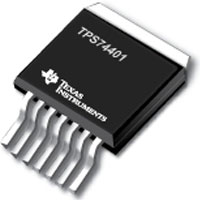By Texas Instruments 62

Texas Instruments' TPS74401 LDO linear regulators provide an easy-to-use robust power-management solution for a wide variety of applications. The user-programmable soft-start minimizes stress on the input power source by reducing capacitive inrush current on start-up. The soft-start is monotonic and well-suited for powering many different types of processors and application-specific integrated circuits (ASICs). The enable input and power-good output allow easy sequencing with external regulators. This complete flexibility lets the user configure a solution that meets the sequencing requirements of field-programmable gate arrays (FPGAs), digital signal processors (DSPs), and other applications with specific start-up requirements.
A precision reference and error amplifier deliver 1% accuracy over load, line, temperature, and process. The TPS74401 family of LDOs is stable without an output capacitor or with ceramic output capacitors. The device family is fully specified from TJ= -40°C to +125°C. The TPS74401 is offered in two 20-pin small VQFN packages (a 5 mm x 5 mm RGW and a 3.5 mm x 3.5 mm RGR package), yielding a highly compact total solution size. For applications that require additional power dissipation, the DDPAK (KTW) package is also available.
| Features | ||
|
|
|
| Applications | ||
|
|